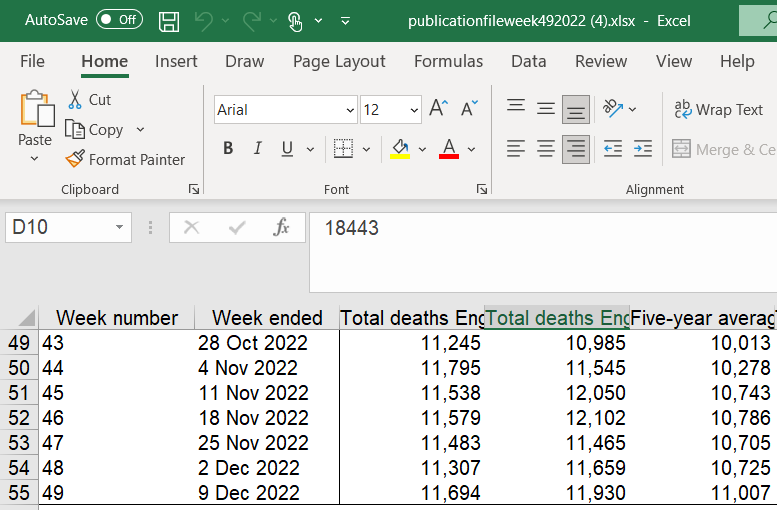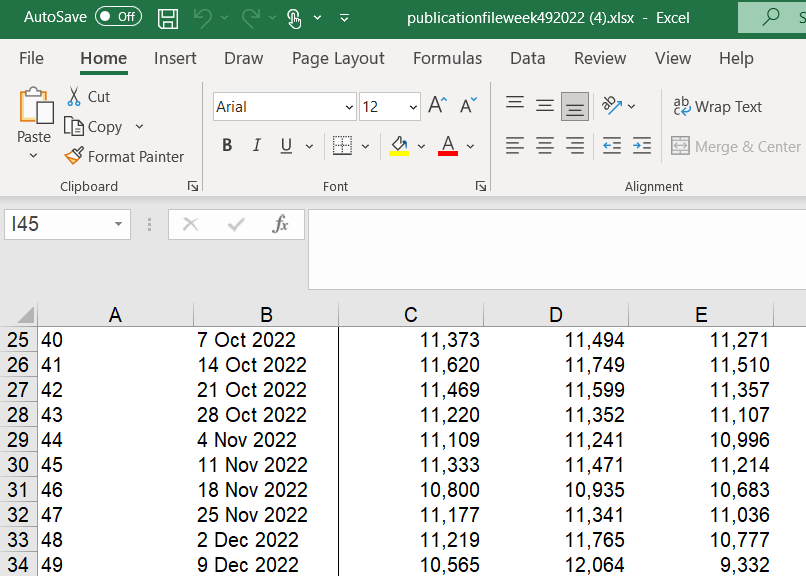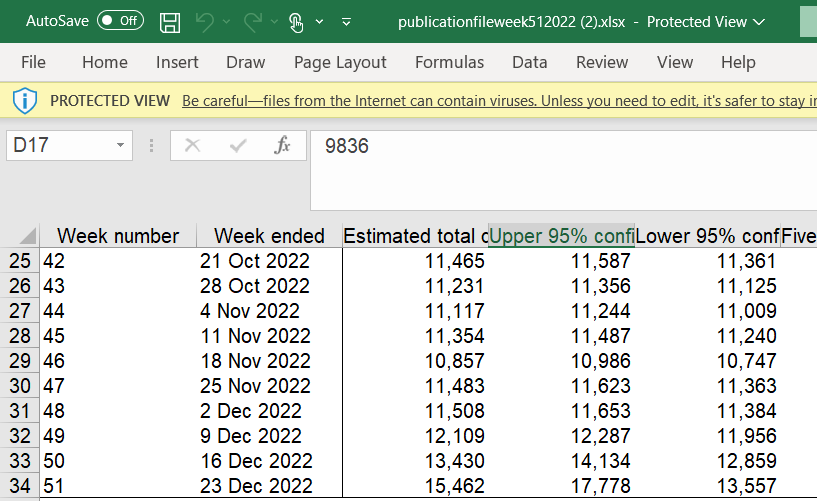Multifocal Necrotizing Encephalitis and Myocarditis after BNT162b2 mRNA Vaccination against COVID-19, (1 October 2022)
www.mdpi.com/2076-393X/10/10/1651
76-year-old man with Parkinson’s disease
Died three weeks after third COVID-19 vaccination
May 2021, ChAdOx1 vaccine
July 2021, Pfizer vaccine
December 2021, Pfizer vaccine
Family of the deceased requested an autopsy,
due to ambiguous clinical signs before death.
PD was confirmed by post-mortem examinations.
Signs of aspiration pneumonia and systemic arteriosclerosis
Histopathological analyses of the brain
Acute vasculitis (predominantly lymphocytic)
Multifocal necrotizing encephalitis
Pronounced inflammation
Glial and lymphocytic reaction
In the heart
Signs of chronic cardiomyopathy
Mild acute lympho-histiocytic myocarditis and vasculitis
Patient had no history of COVID-19
Immunohistochemistry for SARS-CoV-2 antigens (spike and nucleocapsid proteins) was performed.
Only spike protein but no nucleocapsid protein could be detected,
within the foci of inflammation, brain and heart
Spike protein detected in the endothelial cells of small blood vessels.
Quotes from the paper
Since no nucleocapsid protein could be detected, the presence of spike protein must be ascribed to vaccination rather than to viral infection.
The findings corroborate previous reports of encephalitis and myocarditis caused by gene-based COVID-19 vaccines.
A causal connection of these findings to the preceding COVID-19 vaccination was established by immunohistochemical demonstration of SARS-CoV-2 spike protein.
The methodology introduced in this study should be useful for distinguishing between causation by COVID-19 vaccination or infection in ambiguous cases.
Clinicians should take note of such case reports for the sake of early detection and management of such adverse events among their patients.
A thorough post-mortem examination of deaths in connection with COVID-19 vaccination should be considered in ambiguous circumstances, including histology.
Clinical History
First vaccination in May 2021 (ChAdOx1)
He experienced pronounced cardiovascular side effects
After the second vaccination in July 2021 (BNT162b2)
Family noted obvious behavioral and psychological changes (e.g., he did not want to be touched, anxiety, lethargy, social withdrawal)
Striking worsening of his PD symptoms
2 weeks after the third vaccination
Suddenly collapsed
Collapsed again 2 weeks after, died shortly thereafter
Clinical diagnosis was death due to aspiration pneumonia.






 Filed under:
Filed under: 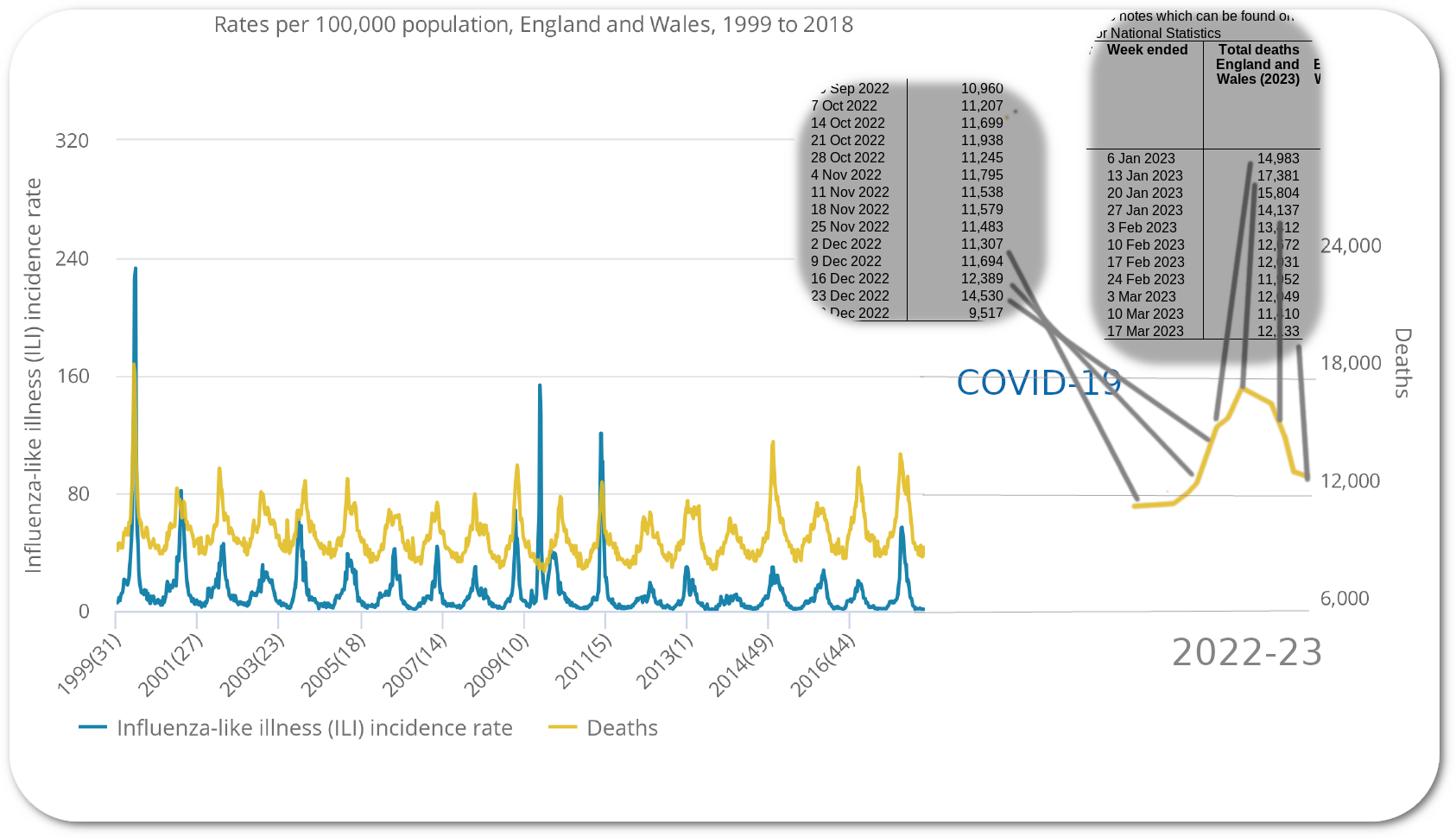
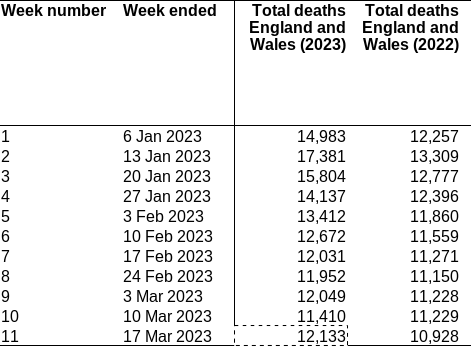

 AM sad about this, but I am not shocked.
AM sad about this, but I am not shocked. uesday’s ONS figures (tomorrow around 10AM) will show if we still have infamous (major increase of about 20%) excess mortality/death levels.
uesday’s ONS figures (tomorrow around 10AM) will show if we still have infamous (major increase of about 20%) excess mortality/death levels. 

 arah Caul’s (ONS)
arah Caul’s (ONS) 